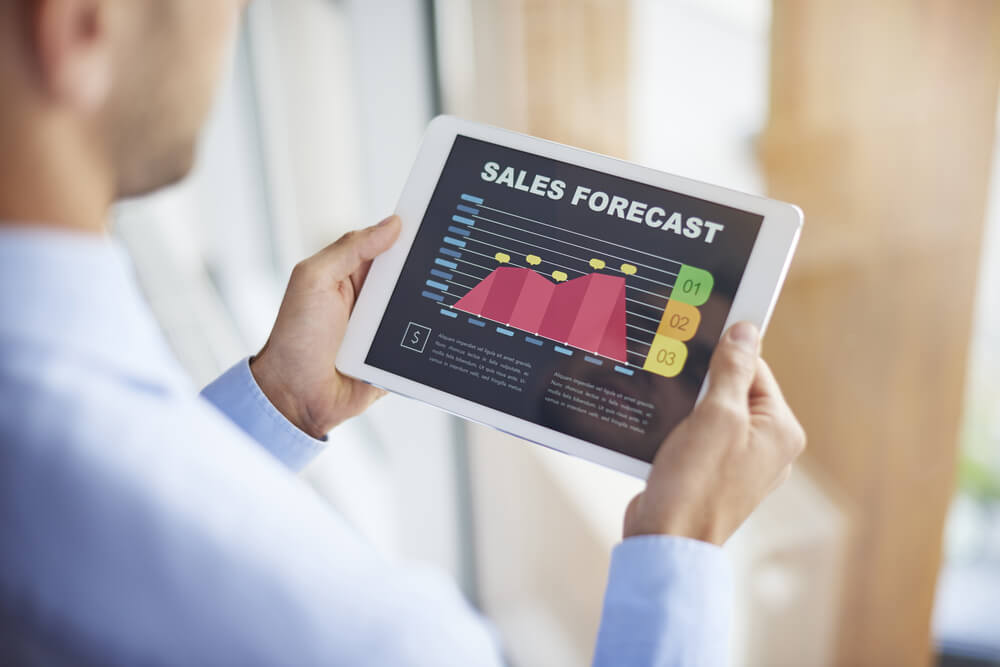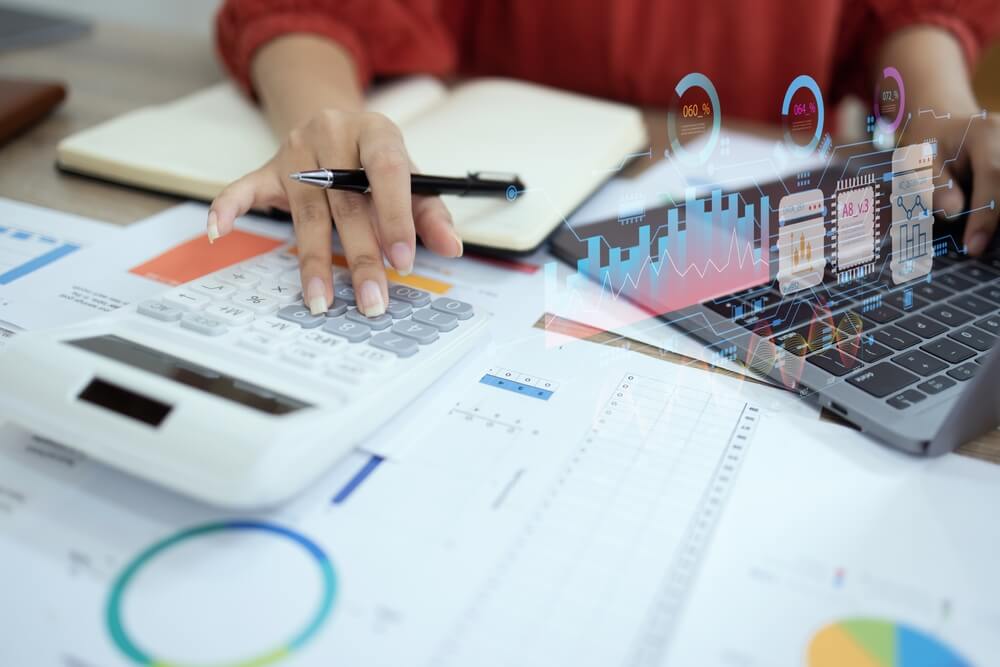
3 Great Tips for Sales Forecast Accuracy Help Budget Choices
How helpful would it be to have a crystal ball that told you how much your business was going to sell next year? Next quarter? Next month?
It’s easy to see the usefulness of this information. How much you sell correlates with your cash flow and liquidity, which makes a big difference to your budget. The more accurately you can predict your future sales, the more informed your budgetary decisions will be.
Of course, if anyone had a crystal ball, they would be too busy calling their stockbroker to make sales forecasts. This is not a disqualifier; nearly every organization can improve their sales forecasting calculations without magic. Here are three great tips for sales forecasting accuracy to help budget choices from a leading fractional sales management service.
- Start with Historical Data
- Adopt Advanced Forecasting Tools
- Use Rolling Sales Forecasts
Ready to learn? Let’s go!
Need some direction for increasing sales? Watch this video to learn what DAP can do for you!
What Is Sales Forecasting?
Just like a weather forecast attempts to predict tomorrow’s weather, a sales forecast attempts to predict sales volume over a set period of time.
Accurately forecasting your sales helps you make budgetary decisions that preserve cash flow and liquidity. However, inaccurately forecasting sales — overestimating growth, missing a seasonal decline, etc. — can result in a cash-flow crunch, leaving your business scrambling for credit, struggling to make payroll, or even closing its doors.
Sales forecasting has many different techniques and schools of thought, making it intimidating to know where to start and what to pay attention to. Hiring a fractional sales management service can help you forecast with ease, or follow these tips below to gain some background.
Tip 1: Start With Historical Data

One of the best indicators of future performance is past performance: if you want to know how much you’ll sell next year, start by counting how much you sold last year. Of course, this isn’t the be-all-end-all of sales forecasting. A lot can happen to make next year different.
Maybe you can apply a growth multiplier based on increases in your funnel performance; maybe that’s too optimistic. Maybe it’s too pessimistic, and a big event, forum, or partnership will boost your sales. At best, historic sales data is a starting point.
That doesn’t make your historic sales data useless; historic sales data can help you identify seasonal shifts so you can plan for recurring increases and decreases in revenue. To maximize your historical sales data insights:
- Look For Patterns and Outliers. See if there’s a predictable “busy” season or “slow” season. Take note of peaks or valleys in your sales data that don’t recur each cycle and have no plausible explanation — that may be an anomaly that needs to be disregarded, or due to world events unlikely to repeat.
- Make Note Of Promotions and Marketing Campaigns. Don’t just look at what the revenue lines did — dig into why they did it. Consider promotions, sales pushes, events, or marketing campaigns you were running at the time and try to identify the reasons for each upswing.
- Consider External Factors. Don’t just look at what was happening in your company — consider the wider world. Any big moves in the economy, major national or world news, the Fed, the Super Bowl … it can all play a role. Try to identify any external causes to changes in your lines.
Tip 2: Adopt Advanced Forecasting Tools
Once you have gleaned whatever insights you can from historical sales data, it’s time to wade into the murky waters of divination — attempting to predict the future, and make budgetary choices based on your assumptions of sales figures in that hypothetical future.
This is not as intimidating as it may seem: we have come a long way since the abacus, and even small businesses do not have to rely on gut instinct or guesswork. Advanced forecasting tools are available and effective for organizations of all sizes. Tools to consider incorporating into your sales forecasting stack include:
- AI and ML Platforms. This is a “catch-all” category that will cover many of the following tools, but Artificial Intelligence-based and Machine Learning-based platforms can take large datasets and extract sophisticated insights quickly. They can even take multiple inputs and track them against each other — for example, correlating historical sales data with external economic factors.
- Predictive Analytics. These software solutions take your historical sales data and use statistical algorithms to make predictions about future sales volume over time.
- CRMs with Forecasting Capabilities. Many modern customer relationship management (CRM) platforms incorporate sophisticated sales forecasting algorithms. These algorithms make predictions based on the data input into the platform. As time goes on and the CRM becomes a more robust data set, those predictions will get better and better.
- Time Series Analysis. Analyzes a time-based series to recognize seasonal or cyclical patterns and incorporate them into your predictive analysis.
- Business Intelligence (BI). BI is a class of software solution that integrates numerous data sources into powerful visualizations, simplifying the complex information into easily understandable graphics.
- Demand Planning. Demand forecasting software solutions use sales figures, market trends, and other factors to predict the demand for various products, services, and offers.
- Econometric Modeling. This modeling standard integrates complex external economic factors into your sales forecast.
- Scenario Planning. These software solutions let you run “what-if” analysis on various scenarios so you can craft strategies for a variety of outcomes and react quickly to developing situations.
Check out some examples of how companies successfully use analytics to predict their sales.
Tip 3: Go Rolling, Not Static

Traditionally, companies have settled for a static sales forecast — once a year or once a quarter, they create their model and hope for the best. That’s the model for the rest of the year (or the quarter).
Why? Because without advanced software tools, the process of sales forecasting used to be so complicated that it was only practical to do it at milestones.
However, advanced tools have made it practical for every company to adopt a rolling sales forecast, which updates the forecast much more frequently. With a monthly rolling forecast, for example, every month you update the model and add a month. At the end of January you input January’s data, update the model, and add January of next year to the model.
Rolling sales forecasts are the wave of the future due to increased accuracy, responsiveness, and strategic usefulness, enabling businesses to allocate resources more effectively and react quickly with better budgetary decisions.
Summing Up
Budget forecasting can seem more like an art than a science, but companies can make their sales forecasts more accurate with advanced tools and strategies, enabling better and better budgetary decisions. They can do this by:
- Making strategic use of their historical data, recognizing its limitations but never discounting how critical it is.
- Using advanced forecasting tools to process large amounts of multivariate information and quickly visualize it.
- Replace static forecasts with rolling forecasts, enabling greater accuracy and adaptability in your budgetary process.
How can companies like yours implement the most effective budgetary forecasting model? Digital Authority Partners (DAP) can help! Reach out to us today to start making better budgeting decisions tomorrow.
Want To Meet Our Expert Team?
Book a meeting directly here




